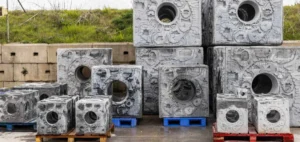Fortescue has entered into a strategic partnership with Chinese group Envision Energy to accelerate the electrification of its mining operations in Australia. The agreement includes the supply of 132 megawatts of wind turbines for a project in the Pilbara region, marking the initial phase of a broader programme aimed at replacing fossil fuels with electricity from renewable sources.
Next-generation technology for low-wind conditions
Envision will deliver its EN182-7.8MW turbines, known for high efficiency under low wind conditions. These machines will be installed on 188-metre Nabralift steel towers, the tallest ever used in Australia. Designed to withstand extreme weather, these structures aim to ensure production continuity in a cyclone-prone region.
Fortescue plans to reach operational carbon neutrality — referred to as “Real Zero” — by 2030 for its direct (Scope 1) and electricity-related indirect (Scope 2) emissions. The Pilbara project is a key milestone in this energy roadmap, also incorporating storage systems and grid optimisation for continuous 24/7 power supply.
Targeting 3 GW of solar and wind capacity
Fortescue’s broader plan includes between 2 and 3 gigawatts of combined solar and wind capacity, supported by large-scale battery systems. All power will be injected directly into the company’s internal network through dedicated transmission lines.
This project forms part of a wider strategy to position Australia as a hub for industrial energy innovation, leveraging the country’s abundant wind and solar resources. It also marks one of the first large-scale deployments of the EN182-7.8MW turbines outside of China.
A model for industrial-scale technology integration
The partnership between Envision and Fortescue highlights vertical integration between generation, storage and digital energy management. Envision also provides digital optimisation solutions to enhance the long-term performance of renewable assets.
The collaboration aims to demonstrate the feasibility of competitive energy solutions against fossil fuels in high-intensity industrial sectors. The project could serve as a reference for other regions facing similar large-scale decarbonisation challenges.






















